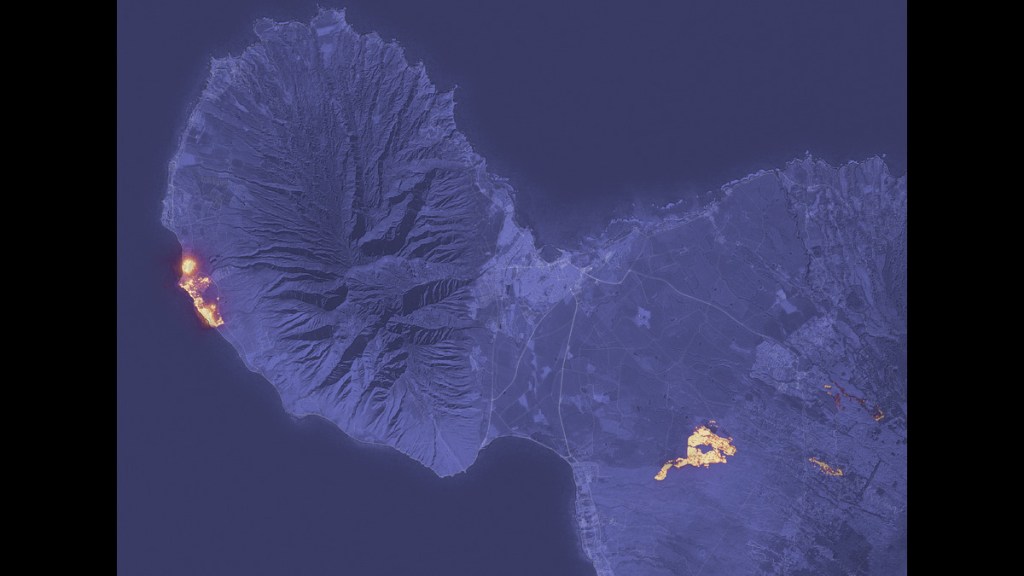Two weeks since the first report of a wildfire in Lahaina, Hawaii, the scope of the tragedy is coming into focus.
Search teams looked through every single-story residence in the disaster area and found the remains of 115 people. The death toll is likely to grow as teams now look through multi-story residences and commercial properties.
As of Aug. 21, the fire, which began on Aug. 8, was considered 90% contained and has burned through more than 2,100 acres, according to Maui County.
More than 2,000 buildings in Lahaina were destroyed or damaged by the blaze, according to an artificial intelligence model compiled by Esri, a geographic information system software provider.
The AI model reviewed satellite photos of Lahaina before and after the fire and estimated on Aug. 11 that 2,088 structures – about 63% of all structures in the examined area – had been destroyed or damaged.
Most buildings were homes. The Federal Emergency Management Agency estimated on Aug. 12 that the fire had destroyed 1,466 houses; 85% of all structures that were assessed were destroyed.
Based on Esri’s estimates of damaged structures and building types provided by USA Structures, nearly 1,800 residential structures were damaged in the fire. USA Structures is a dataset maintained by the Department of Homeland Security, the Federal Insurance and Mitigation Administration, FEMA, Oak Ridge National Laboratory and the U.S. Geological Survey.
The financial toll of the damage is vast for a town of about 12,000 people. Rebuilding costs could total more than $450 million for residential structures alone, based on Esri’s damage assessment and Maui tax roll data.
That includes $242.1 million in total building value for owner-occupied homes, $136.1 million for non-owner occupied homes, $40.7 million for short-term rentals and $23.2 million for long-term rentals, based on the building values of parcels that overlap Esri’s assessed damaged buildings.
The median residence assessed damaged by the fire was a 62-year-old, three-bedroom, two-bath structure valued at $242,700, excluding land value.
The damage also complicates hundreds of millions of dollars’ worth of mortgages. Lenders originated more than $670 million in mortgages for borrowers to purchase, improve or refinance single-family dwellings in the census tracts covering Lahaina in 2018-2022, the most recent Home Mortgage Disclosure Act data available.
Lenders originated more than 1,200 such loans over that period, led by Bank of Hawaii with 525, First Hawaiian Bank with 490 and HighTechLending Inc. with 470.
Many of the loans loans originated by these lenders were then purchased by Fannie Mae and Freddie Mac.
The Department of Housing and Urban Development has granted homeowners with Home Equity Conversion Mortgages or mortgages insured by the Federal Housing Administration a 90-day moratorium on foreclosures. HUD also announced a package of regulatory and administrative waivers for further assistance to those in the disaster area.
Homeowners may also borrow up to $500,000 to repair or replace their homes in a low-interest disaster loan from the Small Business Administration. Real estate professionals, too, have provided relief funds.
Officials’ primary efforts are still directed towards meeting the immediate needs of people in the disaster area; a full assessment of the damage and what rebuilding will cost will come later.
So far, FEMA has approved more than $5.6 million in assistance to nearly 2,000 households, including more than $2.3 million in initial rental assistance. Maui County officials estimate about 1,900 people are currently sheltered in hotels. The Environmental Protection Agency and Army Corps of Engineers have started debris collection.
Beyond the need for rebuilding, the wildfire’s long-term impact on insurance and affordable housing remain to be seen.
Hawaii is one of several states recently affected by natural disasters, including wildfires.
Will Robinson is a data journalist at HW Media.






